Like this post? Help us by sharing it!
A short ferry ride off the coast of Wakkanai, Japan’s northernmost city, Rebun Island is small in area, but packs a wallop in charm. I have been there three times now, and there is just something about it that continues to lure me back. As I recall my first visit to the island, I am reminded of the excitement, intrigue and pure enjoyment I experienced even before I set foot ashore…
From a distance, I see vigorous motion on the pier as my ferry approaches. I can vaguely make out the shape of a tattered flag being waved back and forth by someone standing, feet spread wide apart, on the dock. As we draw closer, I begin to hear the man’s voice, gruff and raspy from yelling at the top of his lungs, calling out to the ferry, “OKAERINASAI!” – ‘welcome home’ in Japanese. Quite a different sight from your typical port of entry in Japan.
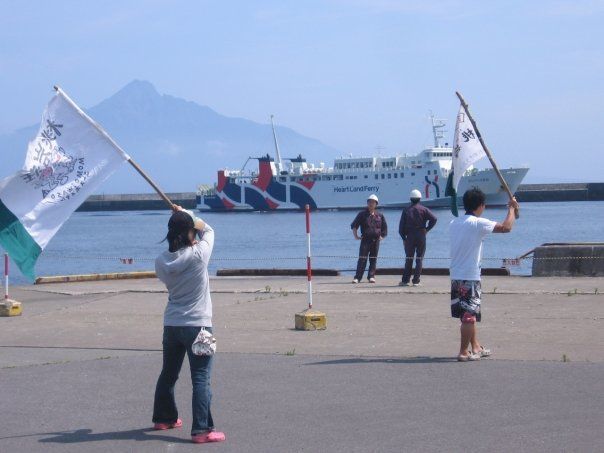
After alighting the ferry, I discover that the shouting man is actually a staff member of the hostel I am booked at for the evening. I discover this fact as he herds me along with all the others bound for the hostel over to a dilapidated old blue truck with a green canvas shell. After a short speech, he ushers us into the back of the truck. In any other country, I would be more than hesitant to get into a truck bed with a strange shouting man, but Japan is another case. I eagerly load up. He shuts the canvas flap behind us, and the only light illuminating the inside is that coming in along the canvas seams.
Once inside, the man says he is called “Do,” a nickname I suppose as it does not sound Japanese. He proceeds to inform us that the Blue Thunder Go Ace – the name of the truck – has a little trouble starting and needs help from the passengers to get going. After goading us reserved passengers into shouting “HASSHARE” several times, the truck starts up with a beep.
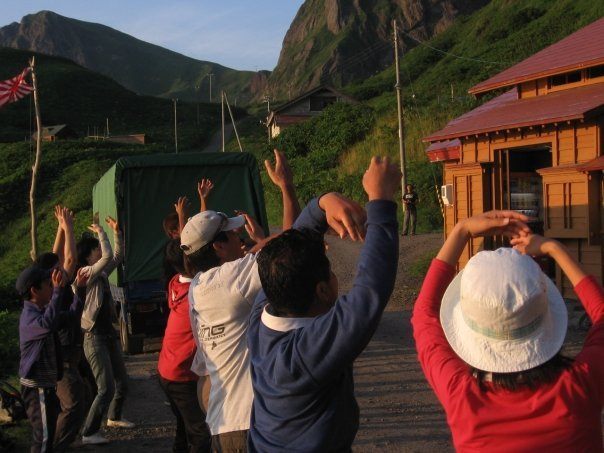
Residents of Rebun Island are occupied in two major pursuits: fishing and tourism. If you visit at the right times of year, you can even see the locals drying kelp that they’ve harvested just off the rocky coastline. The island is 18 miles from top to bottom and 8 miles wide, with its highest point at the summit of Mount Rebun at 490 metres. Also famous for alpine flowers, Rebun is a popular hiking spot in the summer months.
About 10 minutes into the ride, Do opens the canvas flap at the back of the truck bed for us to see. We are passing through a tunnel, which will magically transport us to our hostel, Momoiwaso, and before we arrive, he motions us to let go of our various desires and throw them out of the back of the truck. All the passengers do so amidst giggles. The next glimpse we get out the back is of Momoiwa (Peach Rock) – a majestic formation of dark grey stone, accentuated by green flora.
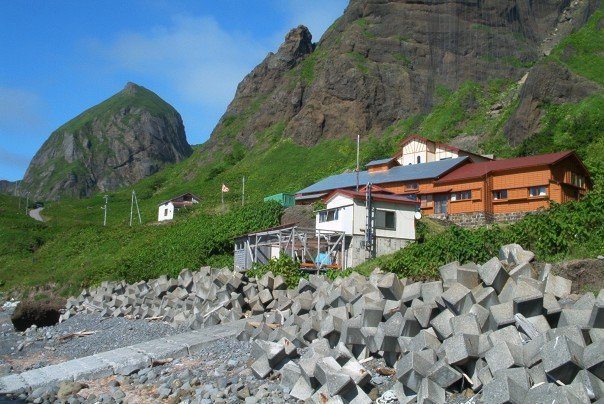
Next thing I know, I feel the truck backing up to something. Do tells us that when he opens the canvas flap, we are to go running out of the truck into the hostel and scream, “TADAIMA!” (‘I’m home’ in Japanese). Having by this time accepted whatever might come, this is exactly what we do. To my surprise, there are three or so other staff members inside the hostel, seated on the old, polished wooden floor, various drums in hand, inundating us with a barrage of noise and screaming, “OKAERINASAI!!” (‘welcome home’).
This continues back and forth for half a minute or so before we are welcomed by one of the staff and given the rundown of the hostel rules. I was interested to note that Momiwaso time is half an hour fast. I feel like I have entered another world.
After checking in, I head outside to see if I can get some pictures in the afternoon light. I open the sliding door to the gravel road we arrived on, and I’m spellbound. A short jaunt down from the road is a rocky beach with deep blue water extending as far as the eye can see. Stretching out to the left, right, and behind me, rugged precipices of marbled dark grey stone and vibrant green foliage line the coast – the entire scene illuminated by the yellow-orange glow of the setting sun.
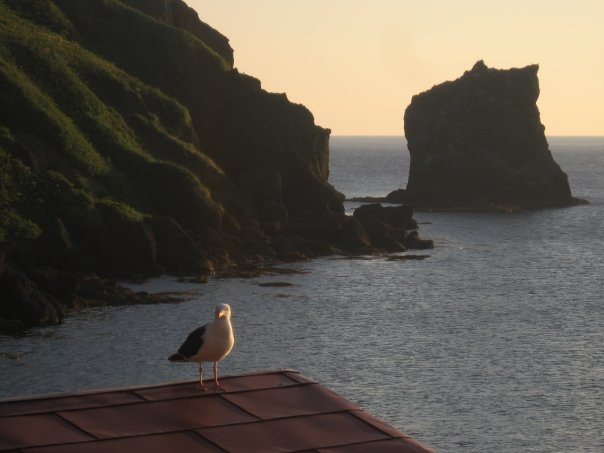
After a bite to eat in the cafeteria and a quick shower, I enter the main hall with the polished wood floor for the nightly “meeting”. The area is dimly lit with some overhead lights, but is mostly still bright from the remaining sunlight in the sky, streaming through the west-facing windows. All the guests are seated on one side of a traditional central hearth, waiting to see what would happen.
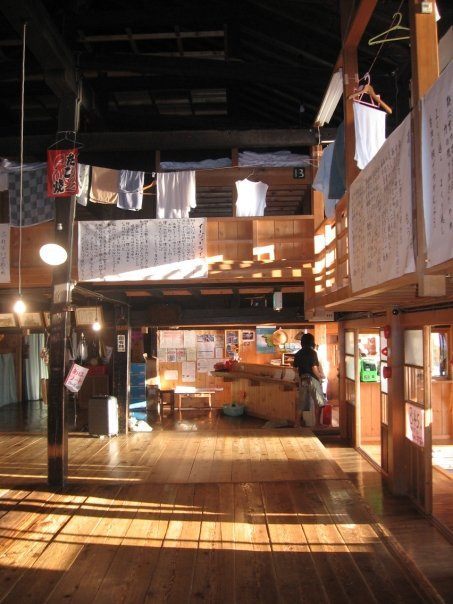
From the quiet a voice erupts, accompanied by strumming on an acoustic guitar. The singer’s only lyrics are “meeting, meeting, meeting,” said with three syllables (mee – ting – gu) in a Japanese accent. He skips around the room, up and down the stairs to the bunks and outside, continuing to sing and strum, “mee-ting-gu, mee-ting-gu, mee-ting-gu.” He eventually settles on the opposite side of the hearth from us, and is joined by two more staff members. They have everyone get up on their feet and tell us we are going to sing a song. The staff member to his left shouts the next line of lyrics to the song so the guests know what to sing, and the staff member with the guitar proceeds to sing the song. About half the guests know the song and sing along confidently, and the rest of us stumble through.
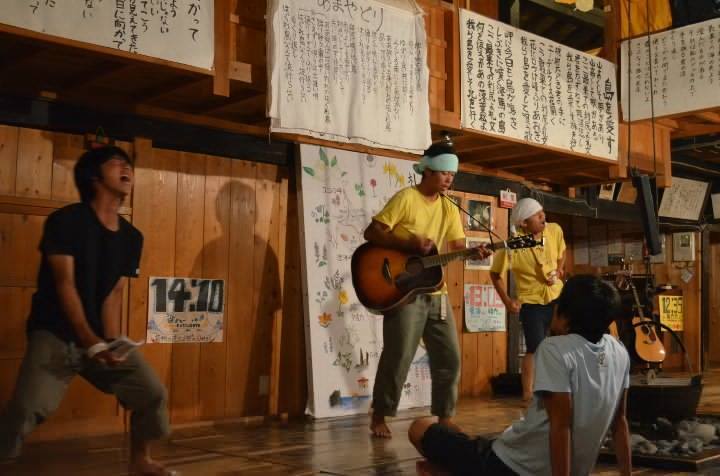
The remainder of this meeting goes much the same, the staff performing various skits, their antics infinitely entertaining to their audience, with everyone clapping along, singing, dancing and jumping around. There is also a break in the middle for a lesson on Rebun Island, complete with puns for the keen listener. And near the end, before a closing song, they have a very convincing pitch/advertisement to stay an extra night and join in on the “eight-hour hiking course” the following day. After some cajoling from the staff and other guests, I agree – the ensuing adventure would solidify Rebun as my favorite place in Japan.
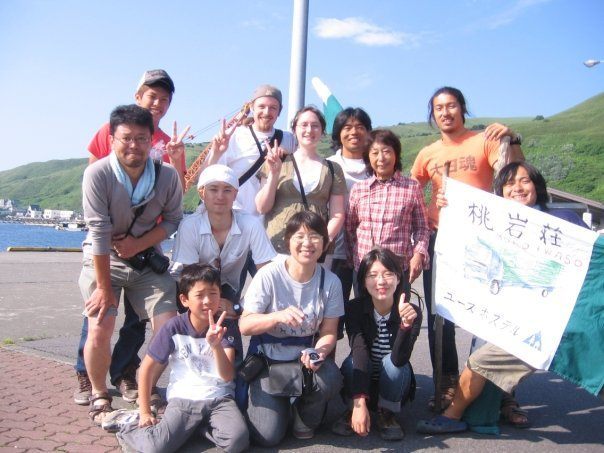
Witnessing this rare outpost of Japanese culture, it seemed like a dream when I returned to the mainland and everyday life. The connections I made with the other visitors to the island were so intensely positive, we formed an instant bond. Add to that the unforgetable topography and ecosystems of the small island, and Rebun is easily the most memorable part of each of my trips to Hokkaido. Getting there is a bit of a time commitment, but the memories are timeless. Whenever I go, I really do feel that ‘I’m home.’
Rebun Island is the northernmost point of Japan, lying off the coast of northerly Hokkaido. If you would like to incorporate Rebun into a Hokkaido itinerary, don’t hesitate to get in touch with one of our Japan experts for advice!

